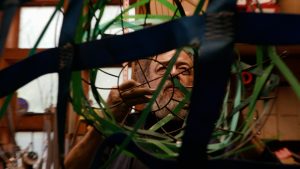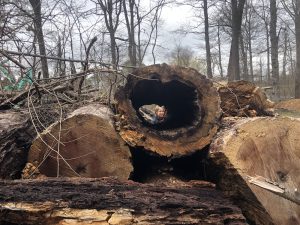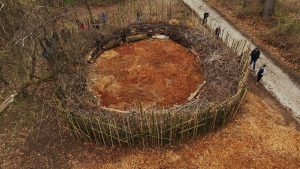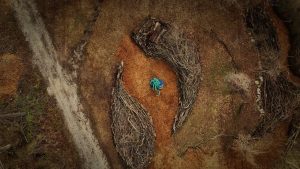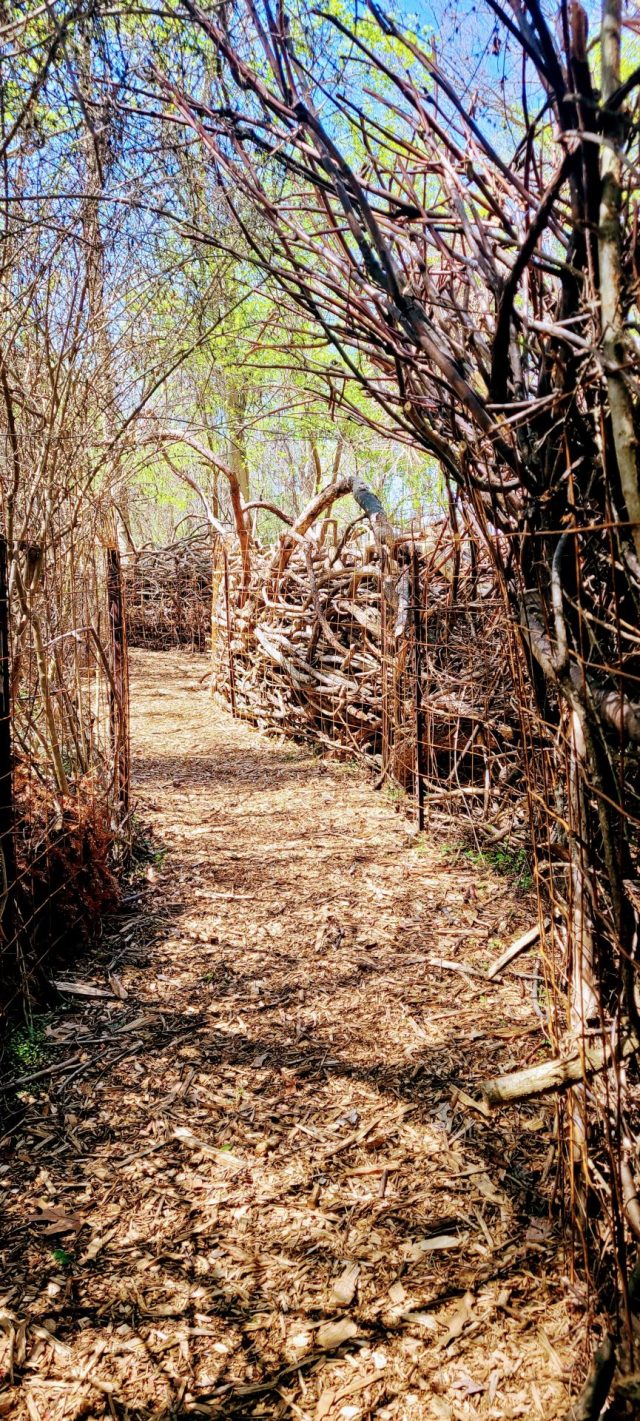David Bacharach’s artist statement
I’ve worked as an artist and craftsman from my studio outside Baltimore, Maryland for over fifty years. Typically, my choice of materials is scrap and recycled copper. The inspiration for my work comes from nature and my love of the natural world. In the 1990s, I noticed changes in the natural areas surrounding my home. More and more dying tulip poplars, oaks, and dogwoods stood starkly against the background of cobalt skies. Stands of woodland ravaged by grazing deer, devoid of native undergrowth, were increasingly clogged with the green gold leaves of garlic mustard and bright green waves of stilt grass. The imperfections caused by invasive plants, disease and a general disregard for environmental change provided robustly compelling visual essays that I often incorporated into my work. But they weren’t the picture of a healthy planet.
2023 was the hottest year since the beginning of climate record-keeping in the mid-1800s.
Because of the current high level of greenhouse gases trapped in the Earth’s stratosphere, heat waves were longer. Ocean temperatures are at an all-time high and sea ice is at an all-time low. Excessive heat has caused polar ice caps to melt, resulting in rising sea levels and coastal land loss. Vast pieces of land have become ecological deserts. Increased heat has caused changes in precipitation patterns, increased risk of droughts and floods, threats to biodiversity, and an overall negative impact on human health.
Simultaneously, microplastic particulates, often the product of decomposing pelagic plastic waste accumulations, have become ubiquitous in our environment. Microplastics – detectable in various concentrations – are present in marine water, wastewater, fresh water, food, drinking water (bottled and tap) and the air we breathe. Experiments demonstrate that exposure to microplastics induces a variety of toxic effects, including oxidative stress, metabolic disorders, disrupted immune response, neurotoxicity, as well as reproductive and developmental toxicity.
Much of this damage has been perpetrated in the name of progress. Since the beginning of industrialization in the mid-1850’s, the often careless and indiscriminate changes to infrastructure and technology, coupled with unrestrained urbanization utilized in the process of transitioning from an agrarian society to a primarily manufacturing one, has resulted in incalculable harm to the planet’s resources and environment.
Aquifers have been drained, canals dug, waterways dredged and rerouted, and rivers buried in culverts or thoughtlessly dammed. Cuts for new roads and fill embankments often lead to severe soil erosion. Old-growth native woodlands have been completely deforested. Industrial waste, much of it toxic, has been cavalierly dumped in the Earth’s waters and thoughtlessly deposited on expansive tracts of land. Over 6500 varieties of invasive and destructive plants, animals, and insects have been introduced in the United States alone. These invasive species have been allowed to expand their range while devastating the native species of flora, fauna, and insect life.
We are facing a biodiversity crisis of catastrophic proportions.
Globally, insect populations have declined by 45% in the last 40 years. One in every three bites of food we consume directly results from insect pollination. The large-scale death of insects poses threats to much of our agriculture as well as our ecosystems. North America’s total population of birds has decreased by 3 billion in just 50 years; climate change is an essential driver behind this trend. The symbiotic relationships between insects, animals, and plants evolved over thousands of years. Adaptation of these interrelationships cannot keep pace with climate change, so insects, birds, animals, and plant life disappear.
The enormity of the consequences of human action in the name of progress should have been recognized and corrected decades ago. It was not. Significant global environmental issues have mostly been ignored or denied despite warnings by scientists and reputable evidence explaining the dire results of avoiding immediate action.
The Mounds sculptures were months in planning and almost nine months in execution.
 90% of the work was carried out by me alone. The woodland I worked in, though ravaged by invasive plants of every description, erosion of the topsoil, piles of used cinder blocks, broken slabs of concrete, and yards of twisted, crushed rusting farm fence, fence posts, and waste material was generally a peaceful, quiet location. Five white-tailed deer observed my daily progress. My constant companions were a mix of songbirds, Barred owls, a red-shouldered hawk, small mammals, rodents, and reptiles. As the hugel mounds grew, my companions immediately took up residence.
90% of the work was carried out by me alone. The woodland I worked in, though ravaged by invasive plants of every description, erosion of the topsoil, piles of used cinder blocks, broken slabs of concrete, and yards of twisted, crushed rusting farm fence, fence posts, and waste material was generally a peaceful, quiet location. Five white-tailed deer observed my daily progress. My constant companions were a mix of songbirds, Barred owls, a red-shouldered hawk, small mammals, rodents, and reptiles. As the hugel mounds grew, my companions immediately took up residence.
Creating The Mounds was often relaxing and always a pleasure. I constantly researched and read about environmental issues for the twelve months of the project. While the act of creation was joyful, the conclusion of my research was terrifying. If humanity does not cooperate and act immediately and decisively to solve many of the world’s environmental issues, the planet will warm by four degrees Celsius by 2100. The result will be a world-devastating “Heat Age.”
About filmmaker Jeff Bieber
 Jeff Bieber’s films and social impact campaigns have cast a new lens on U.S. history and the transformation of the American identity through My Journey Home (2004), The Jewish Americans (2008), Latino Americans (2013), Italian Americans (2015), The Pilgrims (2015) and Asian Americans (2020). His work has garnered four Emmy Awards, a duPont-Columbia Award and three Peabody Awards.
Jeff Bieber’s films and social impact campaigns have cast a new lens on U.S. history and the transformation of the American identity through My Journey Home (2004), The Jewish Americans (2008), Latino Americans (2013), Italian Americans (2015), The Pilgrims (2015) and Asian Americans (2020). His work has garnered four Emmy Awards, a duPont-Columbia Award and three Peabody Awards.
As executive producer of Washington Week, Bieber produced coverage of the 9/11 terrorist attacks, the wars in Afghanistan and Iraq, special convention coverage, and road shows during presidential elections (earning a 2009 Peabody Award). His other public affairs work has spanned Avoiding Armageddon (2003), an eight-hour series about weapons of mass destruction; America at a Crossroads (2007), a 12-hour series about America’s role post-9/11; and the timely two-hour film Korea: The Never-Ending War (2019.)
After receiving a Master of Music in Clarinet from the Peabody Conservatory in 1979 and performing with the Kennedy Center Opera House Orchestra, Bieber broke into television as a score reader for the first PBS Independence Day concert in 1981. That fortuitous assignment developed into a four-decade career producing award-winning series for WETA and PBS. He taught the next generation of media professionals at American and Georgetown Universities from 2009-2012.
